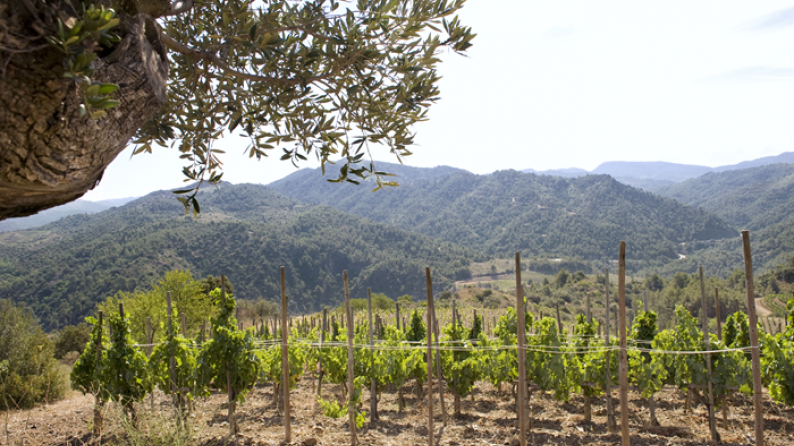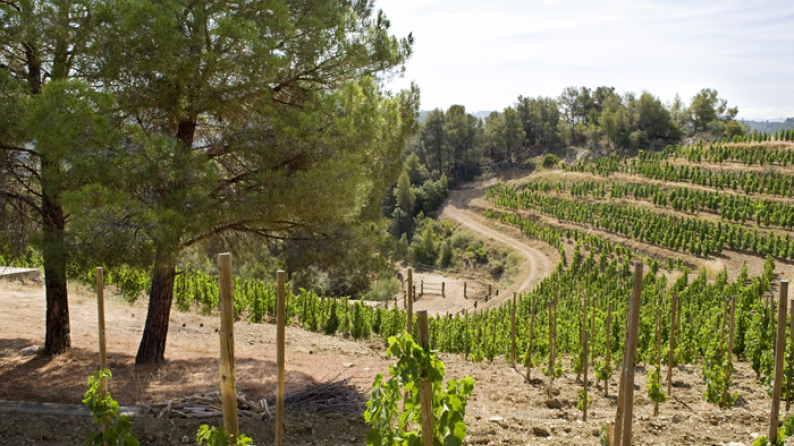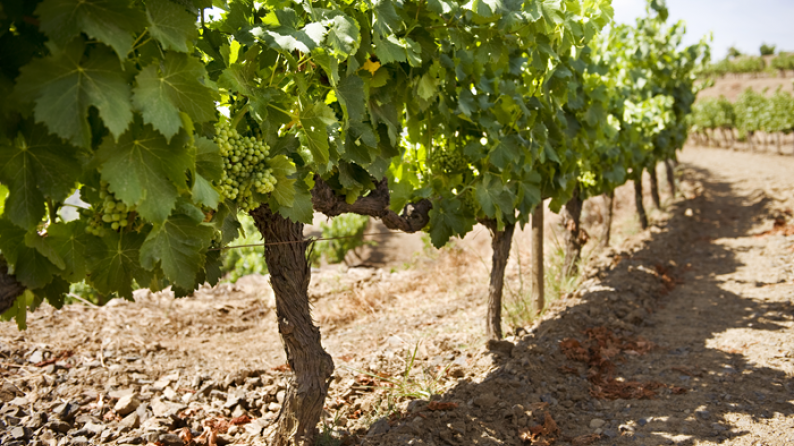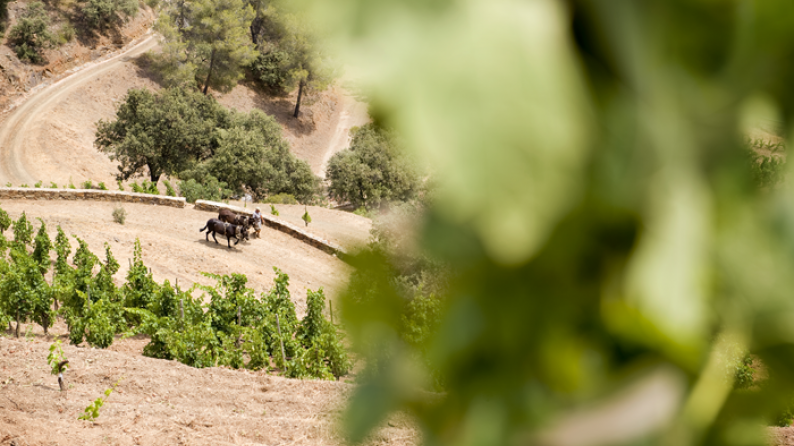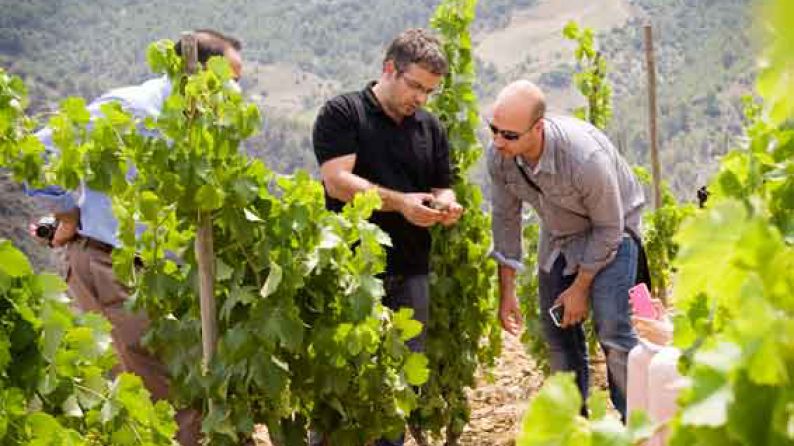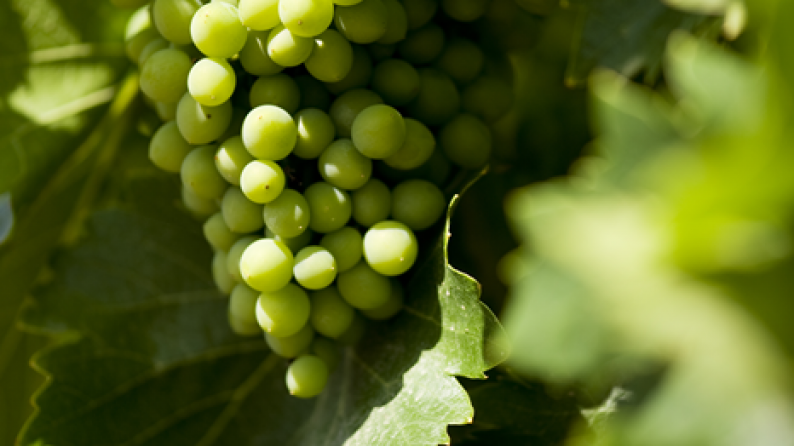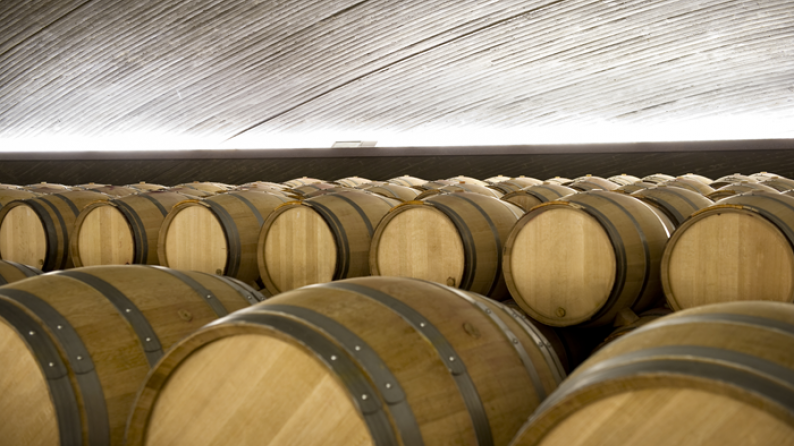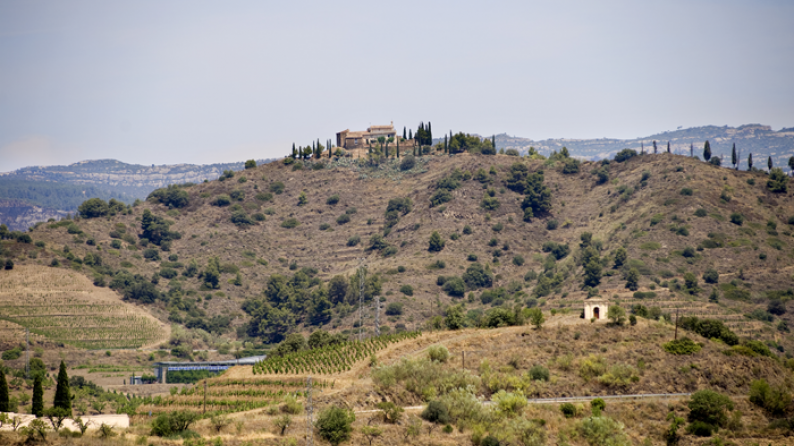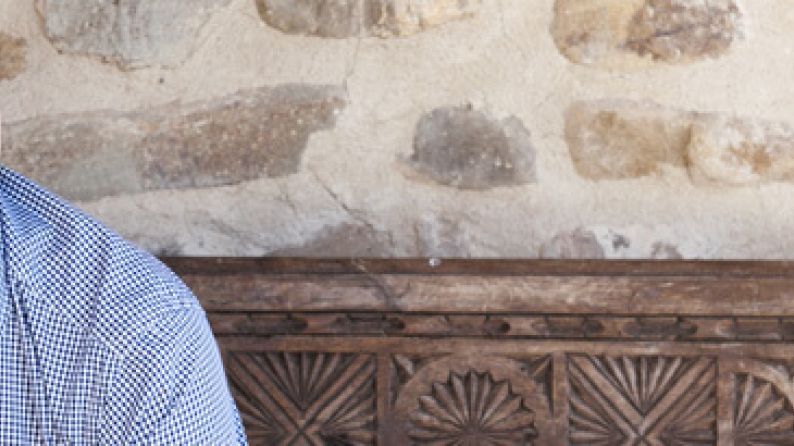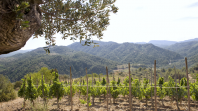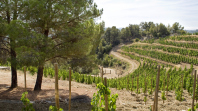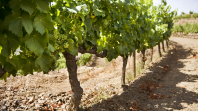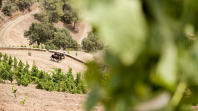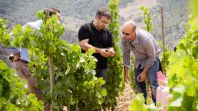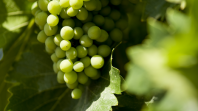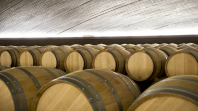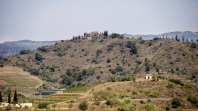Bodegas Álvaro Palacios. A personal history of the Priorat
In the small town of Gratallops, the highly regarded oenologist Álvaro Palacios started in 1989 his personal project to make a great classic wine. 23 years later the results speak for themselves and L’Ermita has become a wine that needs no introduction. Adopting the age-old traditions of countryside cultivated over six centuries, Álvaro Palacios has devoted his efforts to working in the traditional way lands with steeply mountainous terrain and very distinctive features. Finca Dofí and L’Ermita are the main vineyards which sweep up over small hills, absorbing the properties of the fragmented, exposed soils formed by a type of slate called llicorella. These vines give rise to a collection of red wines characterised by their power, their freshness and their ability to convey the essence of the Priorat D.O.
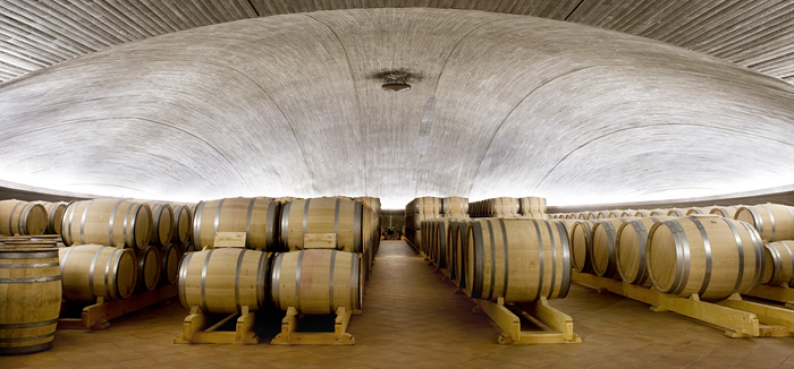 Interior of Bodega Álvaro Palacios
Interior of Bodega Álvaro Palacios
The Priorat and the benefits of its mountainous terrain
Gratallops is a small town perched on a hill and, just on the other side of the road, there stands Bodegas Álvaro Palacios, located in a modern building dominated by large windows. Cellar master Oriol Castells has been working on the project since 1992 and was responsible for showing us around the estate and explaining their way of working.
One of the Priorat's distinctive features is its terroir, and Oriol Castells informed us that it was all to do with the land's metamorphic rock and slightly acid calcareous soil, with its abundance of minerals, resulting in an easier assimilation of nutrients. Furthermore, he explained that “the mineral diversity gives the wines more complexity”.
The estate comprises 40 hectares and all the vineyards are certified organic. Oriol pointed out that there is a climatic condition in their favour: “the area is prone to breezes, and the Garbinada wind, which comes off the sea, lengthens the ripening process.”
From Finca Dofí to Les Terrasses, pure-bred reds
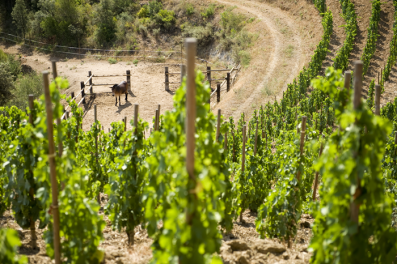 Finca Dofí covers an area of 12 hectares with steep, winding vineyards. Viticulture here falls into two categories: modern and traditional. The modern system employs terraces and the traditional retains the so-called coster or slope, worked with mules. Oriol Castells makes the point that the traditional system is much more methodical and natural, because he feels that terraces break up the original terrain.
Finca Dofí covers an area of 12 hectares with steep, winding vineyards. Viticulture here falls into two categories: modern and traditional. The modern system employs terraces and the traditional retains the so-called coster or slope, worked with mules. Oriol Castells makes the point that the traditional system is much more methodical and natural, because he feels that terraces break up the original terrain.
On the Finca Dofí estate, the highest percentage of grape variety planted is the Garnacha, well looked after and tended carefully in the traditional way. This method requires extra effort, but, as Oriol remarks: “it is part of our culture and our heritage, and what we have of true worth here is tradition and centuries of vine-growing culture and this must be respected and preserved.”
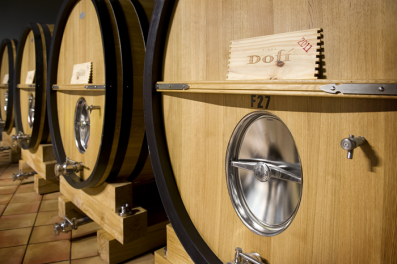 Moving on to the wine, Finca Dofí is a red aged for 19 months in barrel and the winery itself describes it as the most sensual wine due to the soils, which are generally more ferrous and warmer. The Garnacha expresses itself here by producing oily, delicately voluptuous, and lively wines.
Moving on to the wine, Finca Dofí is a red aged for 19 months in barrel and the winery itself describes it as the most sensual wine due to the soils, which are generally more ferrous and warmer. The Garnacha expresses itself here by producing oily, delicately voluptuous, and lively wines.
In the case of Les Terrasses, we come across selected old vines, where the produce from hundreds of parcels belonging to various municipalities comes together, with different estates joining forces to offer a wine which reflects the area's regional history. Les Terrasses is made from Samsó and Garnacha grapes and mirrors the tradition and complexity of the Priorat's terrains. The Álvaro Palacios winery maintains that this wine “restores traditional methods and brings into sharp focus the quiet refinement of times past”.
Restoring the Vi de Vila DO
In 2009, the Priorat DO took a step forward towards reinforcing the identity of the towns belonging to this denomination of origin and restored the appellation Vi de Vila (Town Wine), which entails using the name of the town as the wine's brand name. Álvaro Palacios, a driving force behind this initiative, makes a wine identified in this way, and explains to us that “we are drinking places, not people; it was like this before and this is how it should be”.
This designation sees the restoration of a classic concept inherent in wine-making culture: wine from a municipality. Consequently, the Priorat DO has taken a pioneering step forward in the association of wines with places, since all the Gratallops wineries can now label their wines under the same name.
Oriol Castells, the cellar master, explained what the project was and pointed out that the bodega’s own Gratallops wine is renowned for maintaining the personality of this naturally light and open environment, full of fruit and minerality.
L’Ermita, the great classic from Álvaro Palacios
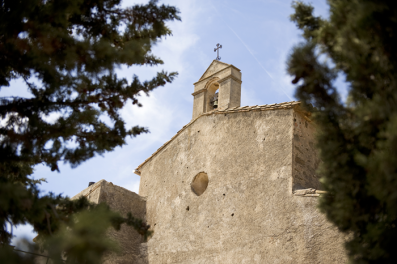 Álvaro Palacios is a well known and highly regarded winemaker who has earned such esteem because of the great wines he makes, and undoubtedly, L’Ermita is one of his standard bearers. We reached the vineyard that Palacios acquired in the early 90s, and every step we took reminded us that we were walking among century-old vines, which filled us with respect and emotion. Grapevines climb up over the hill and at the top sits a small chapel which gives its name to the vineyard, the Hermitage (L'Ermita) of Our Lady of Consolation.
Álvaro Palacios is a well known and highly regarded winemaker who has earned such esteem because of the great wines he makes, and undoubtedly, L’Ermita is one of his standard bearers. We reached the vineyard that Palacios acquired in the early 90s, and every step we took reminded us that we were walking among century-old vines, which filled us with respect and emotion. Grapevines climb up over the hill and at the top sits a small chapel which gives its name to the vineyard, the Hermitage (L'Ermita) of Our Lady of Consolation.
Oriol Castells tells us that this is a unique, magnificent vineyard of 1.4 hectares. He also specifies that “we have 0.2 hectares of vineyard aged 102 years old”. These very old Garnacha vines give rise to an exceptional wine ready to delight everyone who tastes it.
The production process of L’Ermita is meticulous and great care is taken over every last detail. Álvaro Palacios watches over each grape cluster at harvesting, which is done manually in the traditional way. The vines are treated with assiduous attention, the land is worked using mules and the grapes are gathered by hand into 8 kilo crates to guarantee they receive the best treatment. All this to obtain the highest quality for an exclusive wine which results in between 800 and 1,500 bottles coming onto the market, depending on the fruits of each vintage.
Obviously making a wine of this magnitude constitutes a great responsibility which Álvaro Palacios assumes with a positive attitude: “this wine is a challenge, I'm always nervous about it, but it gives me a lot of satisfaction.” In the explanation he gives us, L'Ermita's production falls into 2 stages, with the first from 1993 to 2004, when there was 25% of Cabernet from other vines. After then, as Palacios relates, he made the decision to use only grapes from the vineyard bearing the same name as the wine
When Álvaro Palacios talks about L’Ermita, he conveys passion and dedication for a project that “is like working in the garden and crafting with precious metals”. When he talks about the wine, he smiles and tells us it is a product of “purity and transparency, giving full expression to the setting, the aromas present in the air and in the location”. With his customary poetical rhetoric he adds that this is a “wine with controlled energy, unique beauty, and dizzy capriciousness. A wine that makes you feel giddy when you taste it, sensitive, with aromas of Mediterranean fruits, red fruits enveloped in orange peel, and a mineral and acid power that converts it into a challenging, magical wine. A unified entity full of vivacity and vitality.”
L’Ermita is Álvaro Palacios' great classic wine, one that needs no descriptions: “sublime and delicate in appearance, a wine whose vineyard is strong enough to uphold it”.
From the vines to the winery
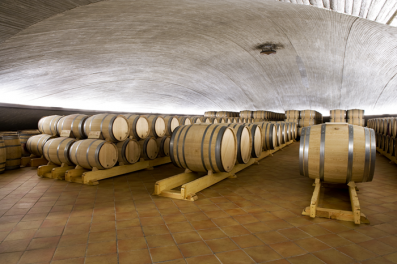 With aromas from the L’Ermita vines still with us and feeling that we had been walking on ground that was truly unique, Oriol took us off to the bodega at Gratallops. The building, which was modern and adorned quite simply with large windows looking out on the town, awaited us. After a walk round the winery, Castells told us about the traditional methods used and took us over to the noiseless, impressive hall where the barrels rest. An incredible vaulted ceiling constructed of concrete left us speechless, its structure made us feel like we ourselves were actually inside a gigantic barrel. In a corner of this enormous hall, we discovered the barrels of L’Ermita, the four of them carefully arranged, and drawing near, we felt close to the process that would result in wine which, after 18 months in barrel, will delight the most demanding of palates with its personality and exclusivity.
With aromas from the L’Ermita vines still with us and feeling that we had been walking on ground that was truly unique, Oriol took us off to the bodega at Gratallops. The building, which was modern and adorned quite simply with large windows looking out on the town, awaited us. After a walk round the winery, Castells told us about the traditional methods used and took us over to the noiseless, impressive hall where the barrels rest. An incredible vaulted ceiling constructed of concrete left us speechless, its structure made us feel like we ourselves were actually inside a gigantic barrel. In a corner of this enormous hall, we discovered the barrels of L’Ermita, the four of them carefully arranged, and drawing near, we felt close to the process that would result in wine which, after 18 months in barrel, will delight the most demanding of palates with its personality and exclusivity.


